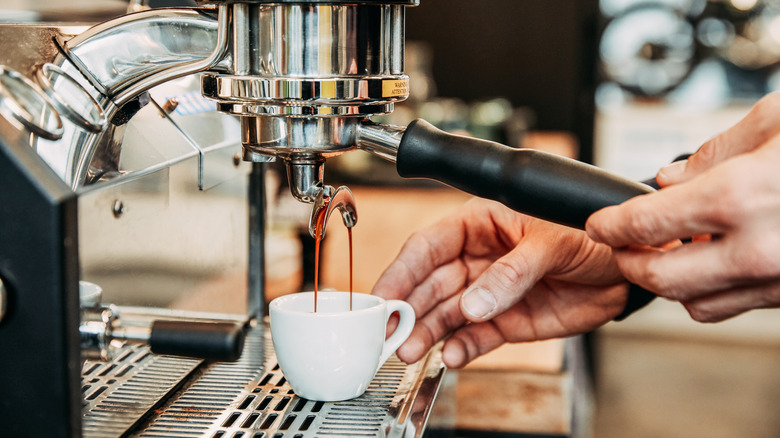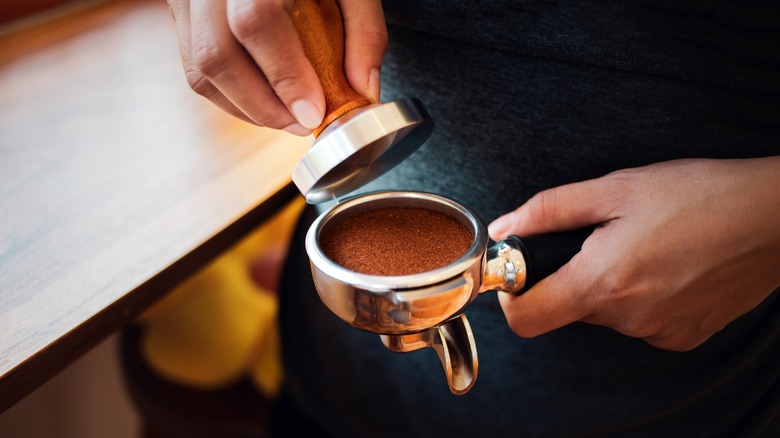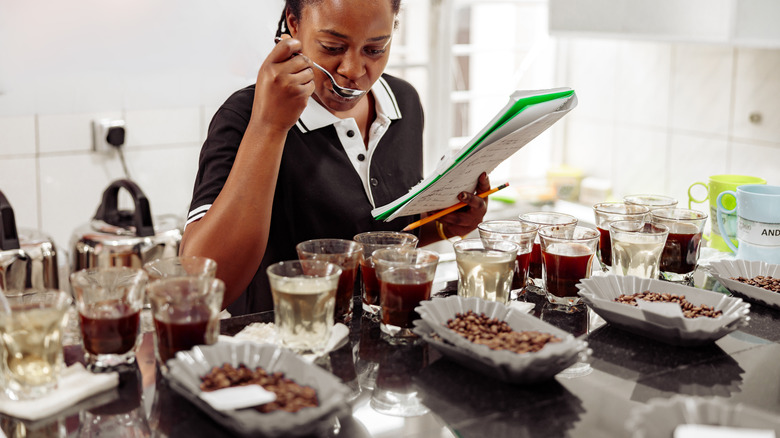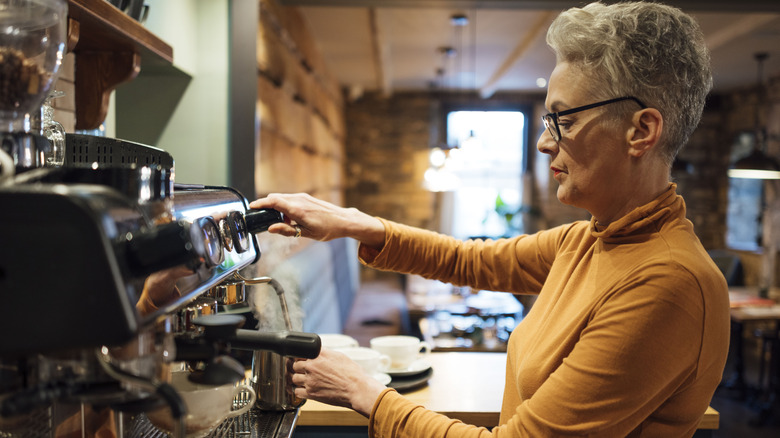Why Your Homemade Espresso Will Never Taste As Good As Your Favorite Cafe's, According To An Expert
When I was hired as a barista in DC, I envisioned slinging espresso shots effortlessly and pouring stunning latte art. Little did I know that even after extensive weeks-long training, my espresso would still taste mediocre at best, often coming out bitter and ashy. It was only after being hired at a specialty coffee shop, being trained for months, not days, and working with some of the best equipment in the industry, that I started to make good coffee — the kind that could be sipped on its own without the help of flavored syrups; the kind that people thought to praise and tell their friends to come back for.
And that is why, when customers asked me how to get their espresso at home to taste the same, my answer was simple: You can't. There's no way to recreate specialty coffee-quality espresso at home. That's not to say you can't get a delicious cup of coffee or latte at home! But the extensive training, incredibly pricey pieces of equipment, and devoted round-the-clock care from even more elite coffee industry professionals can't be replicated by home brewers.
Professional baristas develop a sixth sense
The focus of barista training is surprisingly not all about latte art! It's actually a process called "dialing in." Dialing in requires baristas to make microscopic changes to the coffee's grind size by weighing, timing, and tasting the espresso before, during, and after pulling the shot until it's in ratio. If the grind size is too fine, the water will mingle with the espresso for too long, extracting all of the sugar and ultra-bitter tannins, and you'll be left with an ashy undrinkable mess. Too large, and the water will pass through the espresso without enough time to pull the sugars and rich chocolatey flavors out, leaving you with a sour-flavored espresso shot. This process can take literal hours for beginner baristas and then just a few minutes for seasoned veterans.
Dialing in requires constant monitoring, and has to be adjusted throughout the day. Have you ever known somebody who says they can tell when a storm is rolling in because their leg starts to hurt? Baristas can tell when it's about to rain based on their espresso. The increase in humidity in the air will make a subtle difference in the espresso, and a barista has to detect this shift and quickly adjust. That is how precise you must be to get a good shot of espresso. Though you probably aren't pulling espresso shots by the hundreds, this level of care is a tall order for a home brewer, even once a day.
Beyond dialing in
While the extensive training and precision professional baristas undergo can't be overstated, it's not the only factor that gives them an edge over at-home coffee brewers. Baristas don't just use a formula to tell them how to dial their espresso in — much of this part art, part science is learning how to really taste the coffee. That may sound silly, but when you ask a qualified barista about the difference between a robusta blend and an arabica single origin for instance, they should be able to tell you super descriptive flavor notes.
The barista's palette is honed through a practice called cupping, where they take tiny sips of freshly brewed coffee and identify the key flavor notes through a process of tasting and observing. Beyond just sweet, bitter, and sour, baristas train to identify more subtle notes like rose water, berries, peanut butter, and much more.
And it's not just on the individual barista to keep the standards of the café high. At the chain of specialty coffee shops I worked in, there was one elite trainer who was responsible for quality checks on all of the shop's equipment. They kept everything running at the top level, testing whether there had been a defect in one bag of espresso beans, if a burr in the grinder had dulled, and so on. That level of knowledge and care is just not possible in most basic coffee shops, let alone your countertop espresso maker.
No at-home machines compare
A myriad of factors can cause the espresso to change, like the hopper (the thing that holds the whole beans) running low, or a barista taking out their frustration on the espresso and tamping the powder down too hard. Many of these issues can be both mitigated and enforced by the spectacularly pricy behemoths of coffee equipment they have to use. This brings us to the next point about why your homemade espresso drinks will never be quite as good as the cafe's: even top-of-the-line espresso makers can't compare to professional ones due to quality in manufacturing, durability, and customization.
In addition to being borderline works of art, commercial espresso makers require constant maintenance and cleaning with specialized equipment. Did you know your baristas clean the portafilter (the thing that holds the espresso puck), group head (where the portafilter actually attaches), and tray within an inch of its life multiple times per day? Few of us can remember to deep-clean our at-home French press once a week.
Beyond the espresso machine, you also have to consider things like the coffee grinder. If your current grinder has settings on the dial differentiated between "espresso, drip, French press," etc., you'd need a major upgrade to an espresso-only grinder and hopper to manage precise changes to your espresso grind. And that's just addressing the coffee element. So instead of aiming to recreate professional-quality espresso at home, let your local barista take it to the next level.



